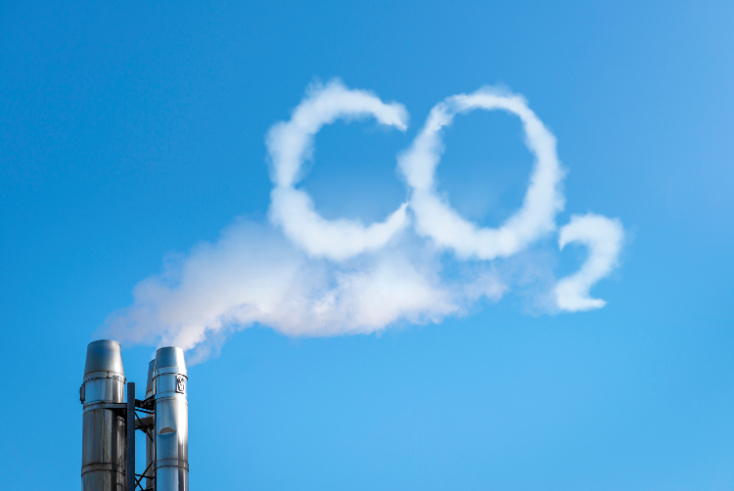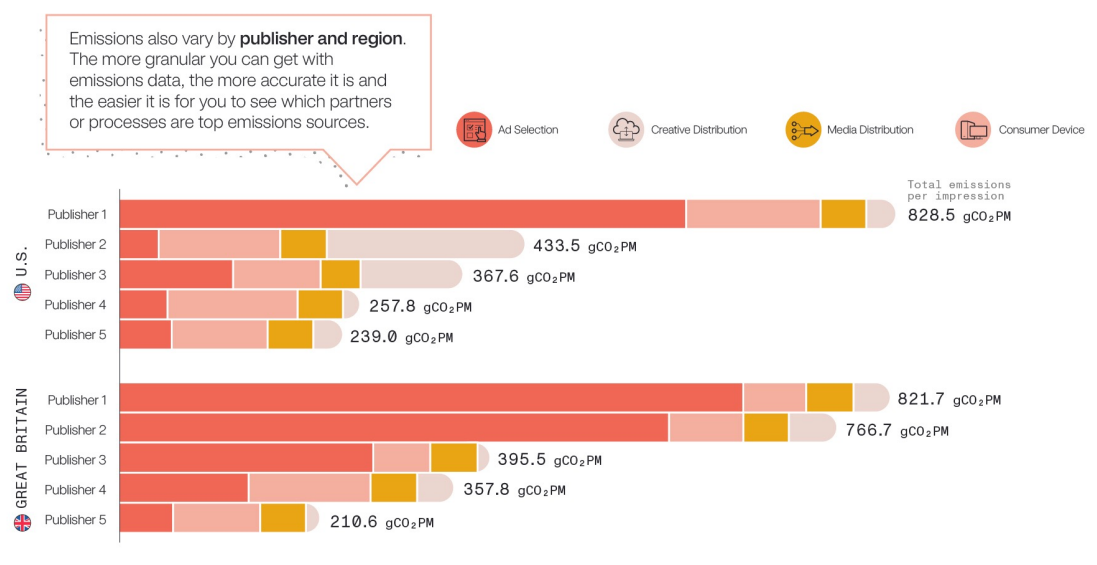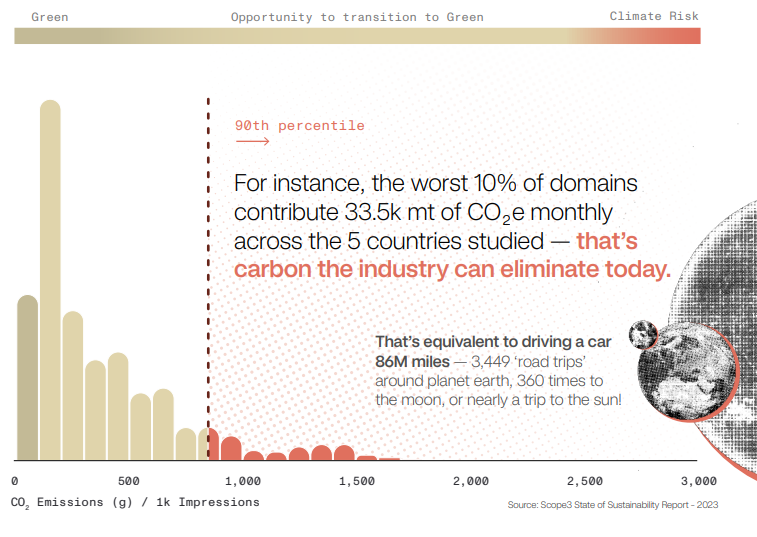Programmatic ads in UK emit same carbon as 15 return flights to New York

Scope3 has found programmatic advertising generates 215,000 metric tons (mt) of carbon emissions per month in five major economies.
This is the equivalent of 24 million gallons of gasoline, when combining monthly emissions from programmatic for Australia (9.3 mt), France (22.7 mt), Great Britain (30.8mt), Germany (52.5mt) and the US (100.0mt).*
The UK total is enough to drive a car more than 26 times around the world (at 36 miles per gallon), or to make 15 return economy flights between London Gatwick and JFK International Airport in New York (normally emitting 1996.11kg of CO2 for both legs).
Scope3’s inaugural State of Sustainable Advertising report focusses on carbon emissions from programmatic display advertising across desktop and mobile, both site, app, video and banner ads, using an open source methodology which they have been building for over a year, and not only isolates carbon emissions by channel and country, but also emission amounts along the supply chain, on a per 1000 impression basis and the worst-performing domains.
Anne Coghlan, cofounder and COO of Scope3, told The Media Leader this report was “a stake in the ground” with the intention to have more frequent and wider ranging reports in future to include more channels and ads to make the industry move faster towards decarbonisation.
The report examined carbon emissions along the supply chain from ad selection, consumer device, creative distribution to media distribution.
For the five countries included in this initial report, the most carbon was emitted in the ad selection part of the supply chain, mostly through the bidding process to place ads online.
Scope3 found ad selection accounted for a global average of 60.7% of total carbon emissions from programmatic advertising impressions, followed by consumer devices with 20.3%, media distribution with 10.1% and creative distribution 8.9%.
Coghlan said this meant this was “the best part of the supply chain” to reduce carbon in to make big gains in creating more sustainable media and advertising.
However, the amount of emissions from each part of the supply chain varied between region and publisher. For instance, publishers in the UK tended to have a higher proportion of carbon emissions in their supply chain from ad selection than the US.
Scope3 decided to not name the publishers or domains in a “name and fame” rather than “name and shame” to encourage publishers to reduce their carbon. For instance, Coghlan gave the example of how Insider had already reduced its carbon emissions by 20% in Q1 2023.

Most of these carbon emissions come from data centres where the sheer number of servers, how they communicate between each other and the cloud use a huge amount of electricity, and also need air conditioning to factor in for overheating machines.
The global average for emissions per serving 1000 ad impressions was approximately 514.8 grams of carbon dioxide and equivalent greenhouse gases, the energy equivalent of putting on a load of laundry, with the average depending per market where the ad was served.
The US had the lowest average emissions per 1000 digital impression served, and Germany the highest out of the five countries included in the report.

In 2021, Good-Loop carbon calculator found a typical online ad campaign would emit 5.4 tonnes of carbon dioxide, or close to half (43%) of the average annual carbon footprint of a person in the UK.
How to reduce carbon going forward
Coghlan recommended companies looking to reduce their carbon shift spend from domains that are high emitters to low emitters of carbon, and for publishers to turn off reselling.
Scope3 also highlighted moving away from “climate risk domains” or the 10% worst-emitting media properties, which contributed 33,5000 metric tons of carbon emissions per month in the five countries in the report, typically included fraud, Made For Advertising (MFA) sites, or low value inventory.
Coghlan said the majority of MFA sites Scope3 looked at in the study were the kind of sites you would have never heard of, full of fake content, with domain names you would never search for. In some cases Scope3 saw tens of thousands of bids for “bad impressions”.
In this 90th percentile of worst-emitting domains, there was an average of 985.9g of CO2 emitted per 1000 impressions.
Scope3 found removing these worst-emitting domains did not negatively impact advertising results, and that there was a revenue justification as well as carbon positive argument for reducing the number of ad tech partners publishers work with and running fewer ads.

Coghlan told The Media Leader: “There is this idea here of carbon reduction not just being beneficial for the world, but also for advertiser outcomes. So we’ve seen that by getting rid of MFA, for example, you’re not impacting performance, and you’re also redistributing money well within the ecosystem.”
She added: “I think this idea of greener or more sustainable advertising creating more sustainable, in more generic terms, ecosystem as well is really important.”
Looking forward, she said Scope3 had two goals for the reports; to include industry changes and hopefully reductions over time, and add chapters as channel coverage like social, search and connected TV is added in future.
The Scope3 report and the data were independently verified by media investment analysis company Ebiquity.
*Editor’s note, this has been updated since publication.
Scope3 assessment reveals carbon benefits of direct ad inventory



